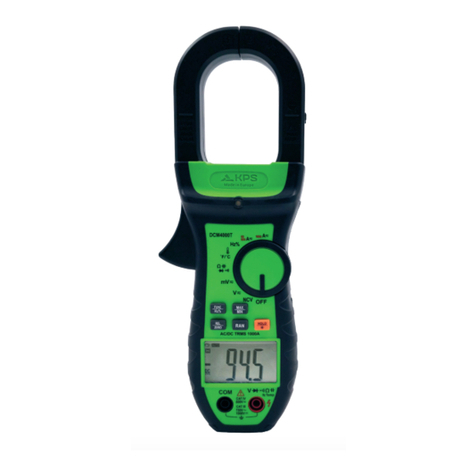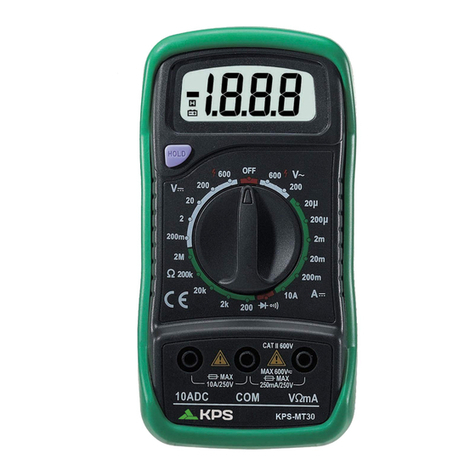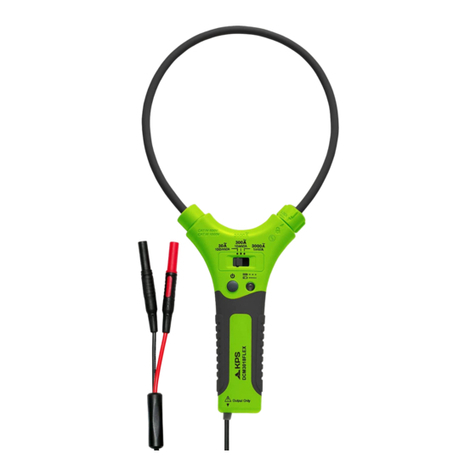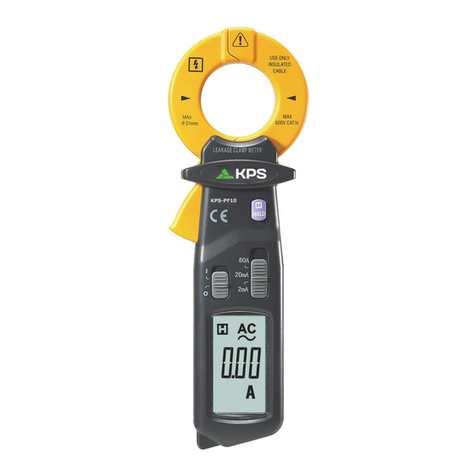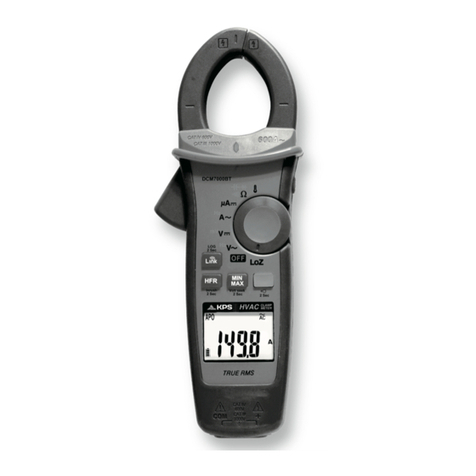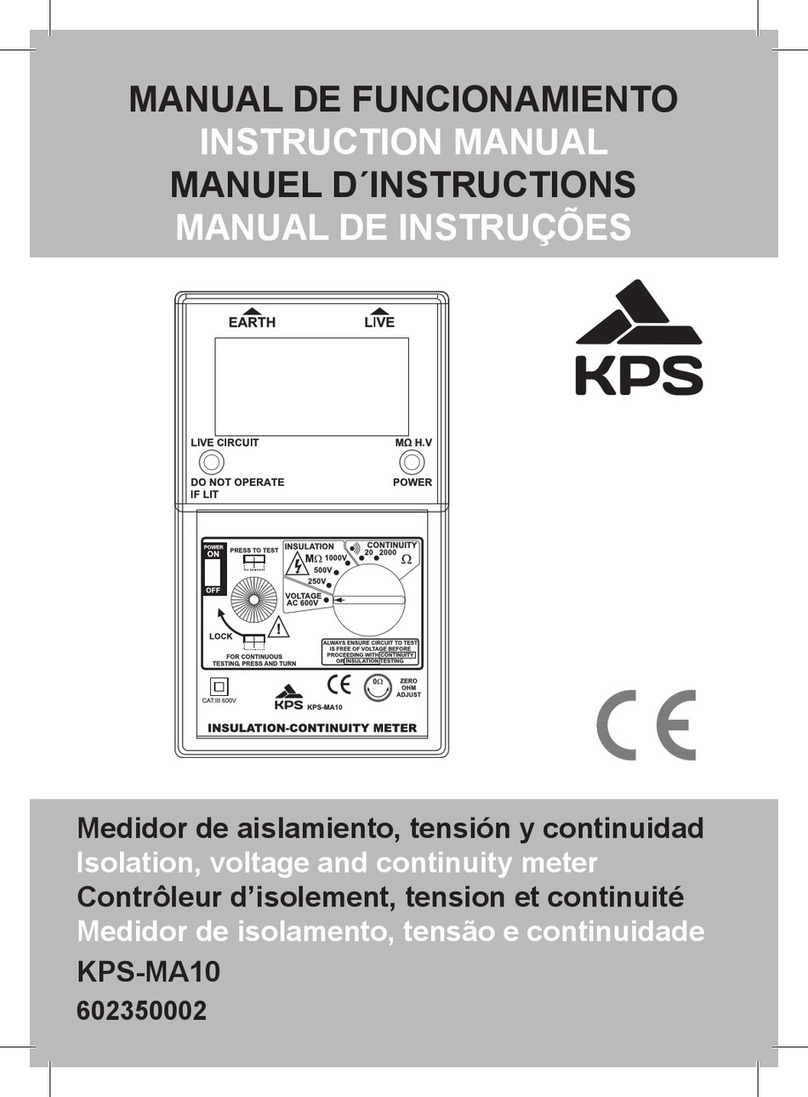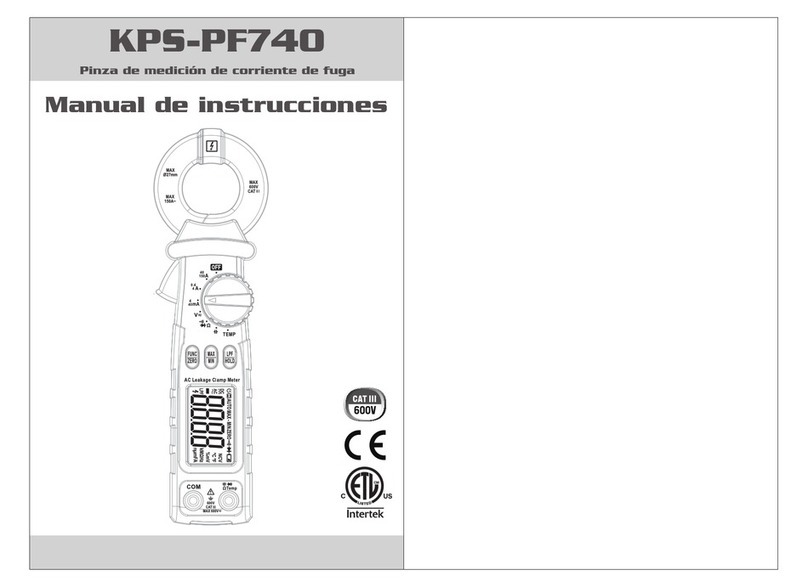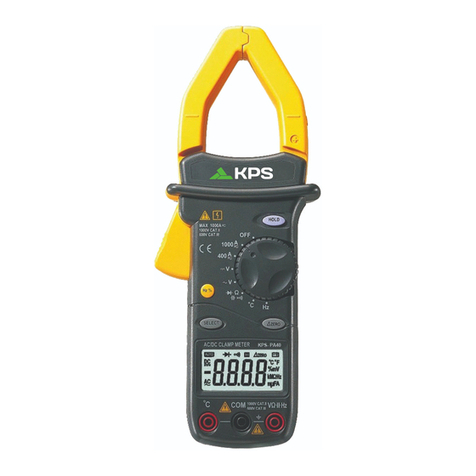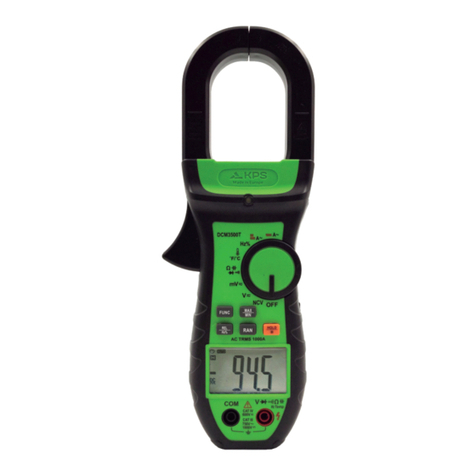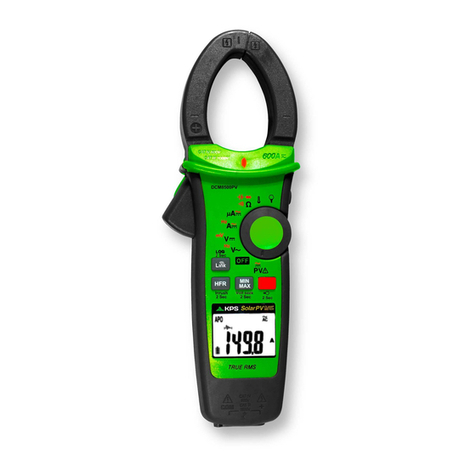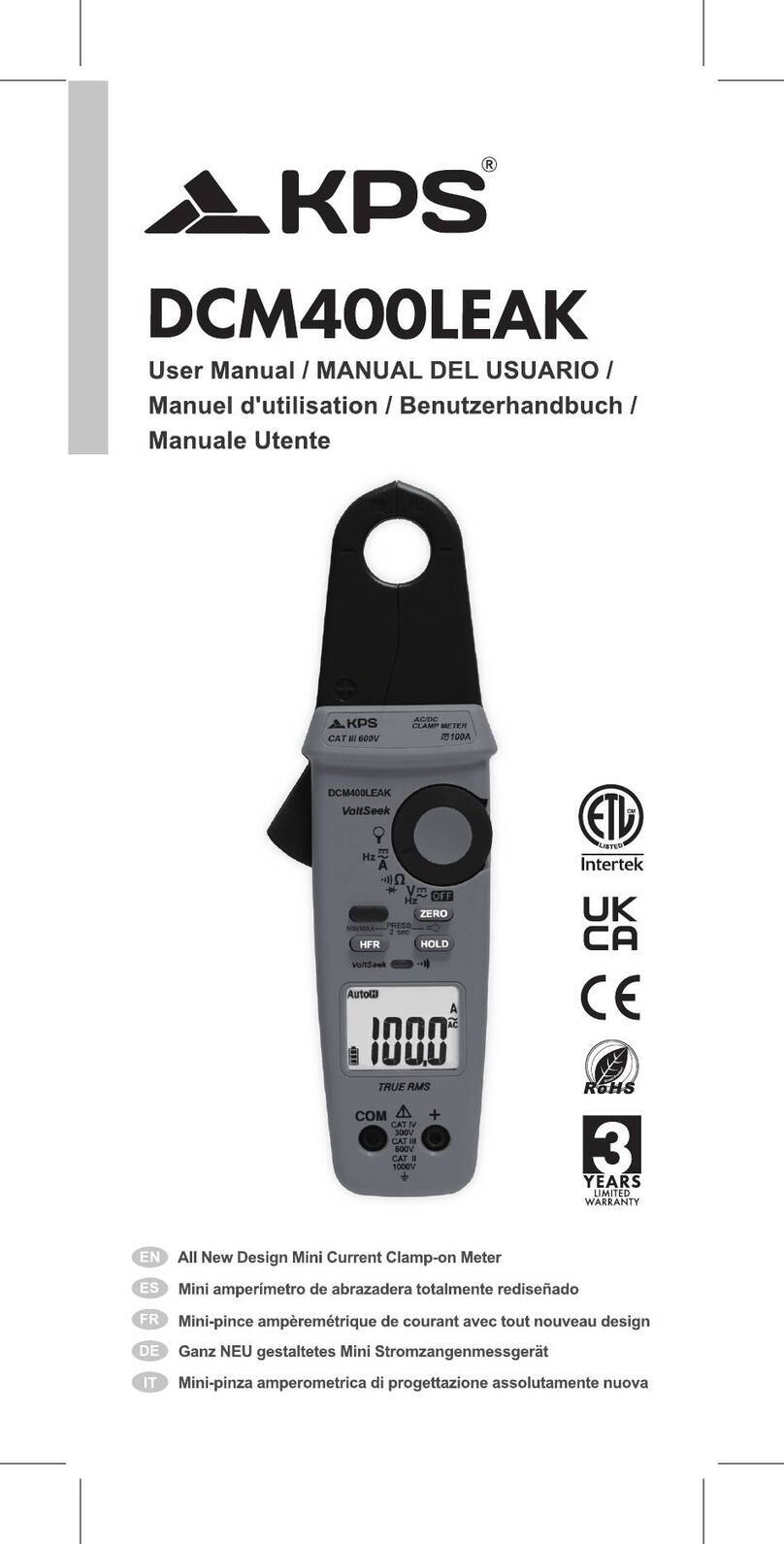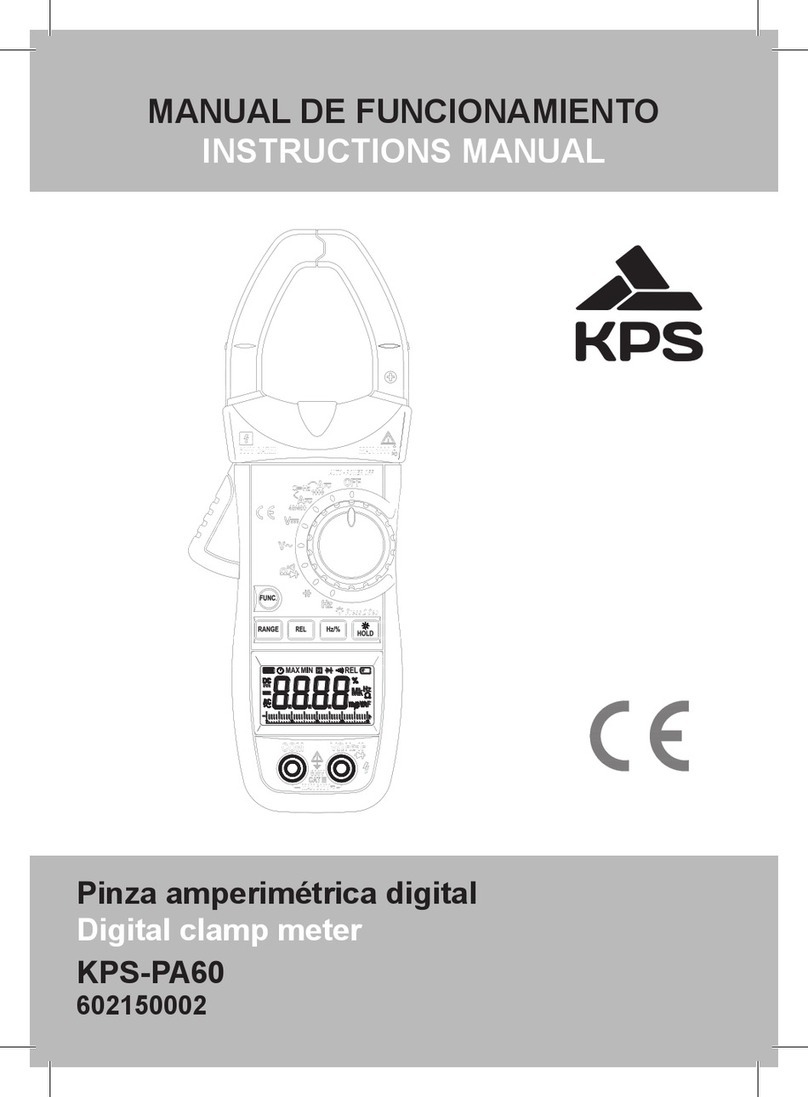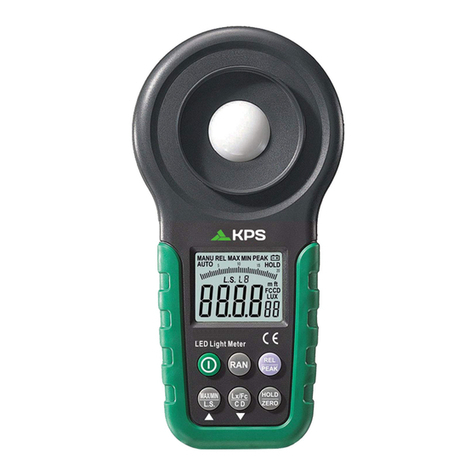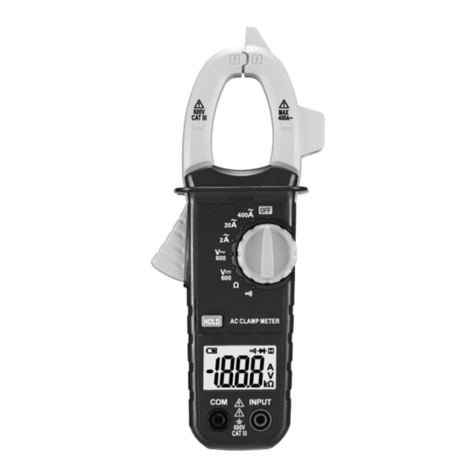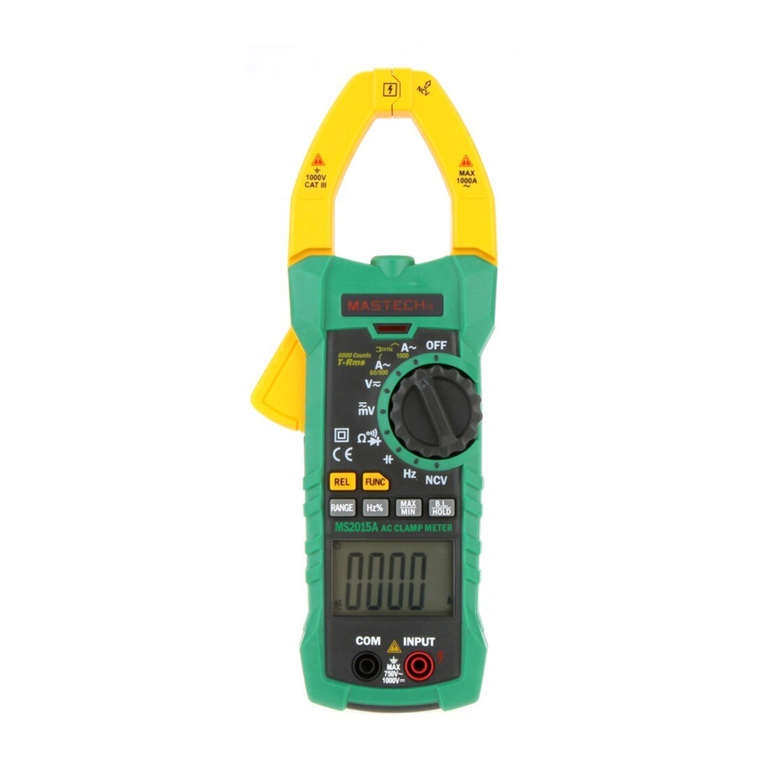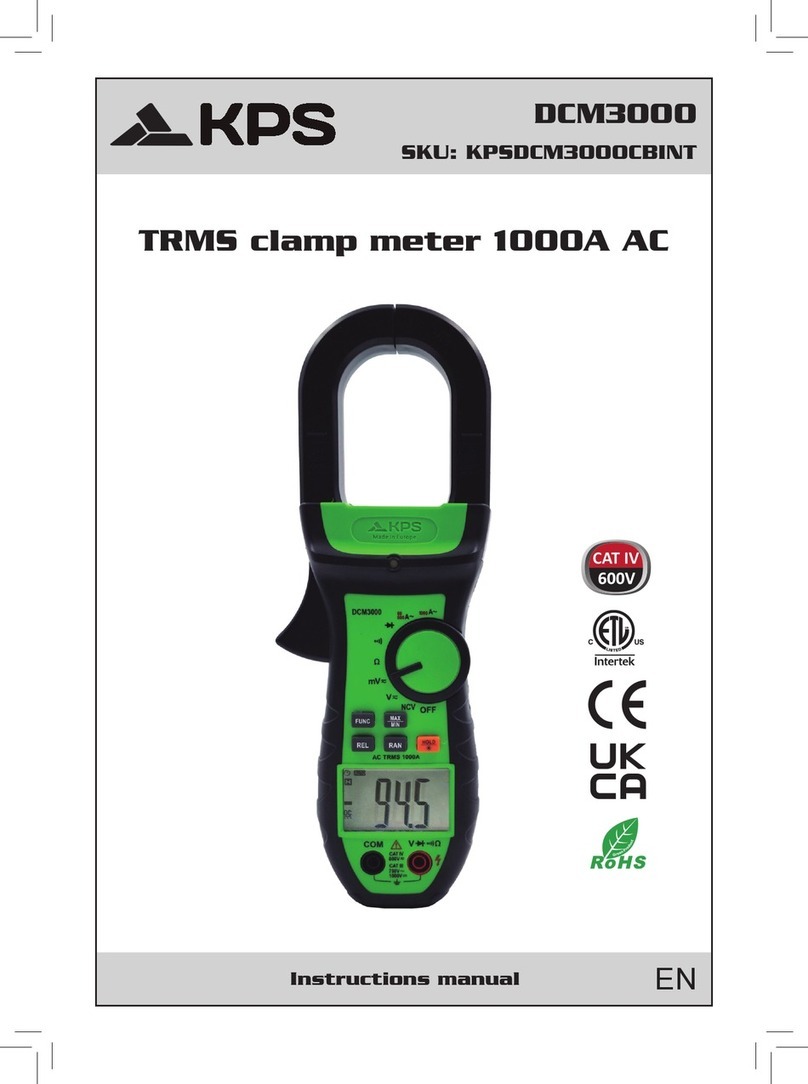
Leakage clamp meter
ENGLISH
See the full
instruction manual:
Safety Information
WARNING
Please particularly note that inappropriate use may cause shock or damage to the meter.
When using the meter, comply with common safety procedures and completely follow the
safety measures in this operation manual.
To make full use of the meter’s functions and ensure safe operation, please carefully read
and follow the procedures in the operation manual.
The meter is designed and manufactured according to safety requirements of
EN 61010-1:2010, EN 61010-2-032, EN 61010-2-033 on electronic measuring instrument
and hand held digital multipurpose meter. And conforms to UL STD 61010-1, 61010-2-032,
61010-2-033, Certified to CSA STD.C22.2 NO. 61010-1, IEC STD 61010-2-032,
IEC STD 61010-2-033. The product meets with the requirements of 600V CAT III
and pollution degree 2.
All safety guidelines outlined should be followed otherwise the protection provided by the
instrument may be impaired.
Warning symbols in the manual alert users of potential dangerous situations.
Precautions are to prevent the user from damaging the instrument or the test object.
Preparation
• When using the meter, the user should comply with standard safety rules:
- General shock protection
- Prevent misusing the meter
• After receiving the meter, please check for damage that may have occurred during
transportation.
• lf the meter is stored and shipped under hard conditions, please confirm that the meter
is undamaged.
• Probe should be in good condition. Before use, please check whether the probe insulation
is damaged, whether metal wire is bare.
• Use the probe table provided with the meter to ensure safety. lf necessary, replace the
probe with another identical probe or one with the same specification
Usage
• When using the meter, select the right function and measuring range.
• Don’t measure when exceeding the maximum value in each measuring range.
• When measuring a circuit with the meter connected, do not touch the probe tip (metal
part).
• When measuring, if the voltage to be measured is more than 60 V DC or 30 V AC (RMS),
always keep your fingers behind the finger protection device
• Do not measure voltage greater than AC 600V.
• In the manual measuring range, when the value to be measured is not known in advance,
choose the highest measuring range to begin, and then gradually select lower ranges until
the correct range is identified.
• Before rotating conversion switch to change measuring function, remove probe from the
circuit to be measured.
• Don’t measure resistors, capacitors, diodes and circuits that are energized.
• During the test of current, resistors, capacitors, diodes and circuit connections, do not
allow the meter to connect with voltage source.
• Don’ t measure capacitance unless the capacitor is discharged completely.
• Don’ t use the meter in explosive gas, vapor or dusty environments.
• If you find any abnormal condition or failure on the met er, stop using the meter and have
it serviced by a qualified technician
• Unless the meter bottom case and the battery cover are completely fastened in their
original places, do not use the met er.
• Don’ t store or use the meter in direct sunlight, high temperature or high humidity.
Maintenance
• Don’ t try to open the meter bottom case to adjust or repair. Such operations only can be
made by qualified technicians who fully understand the meter and electrical shock hazard.
• Before opening the meter bottom case or battery cover, remove probe from the circuit to
be measured.
• To avoid wrong readings and potential electric shock, when appears on the meter
display, replace the battery immediately.
• Clean the meter with damp cloth and mild detergent . Do not use abrasives or solvents.
• Power off the meter when it i s not used. Switch the transfer switch to OFF position
• If the meter is not used for long time, please take the battery out to prevent the meter
being damaged.
Replace Battery
WARNING
To avoid electric shock, make sure that the test leads have been clearly move away from
the circuit under measurement before opening the battery cover of the meter.
WARNING
Do not mix old and new batteries. Do not mix alkaline, standard (carbon- zinc), or
rechargeable (ni-cad, ni-mh, etc) batteries.
• If the sign appears, it means that the batteries should be replaced.
• Loosen the fixing screw of the battery cover and remove it
• Replace the exhausted batteries with new ones.
• Put the battery cover back and fix it again to its origin form
Note:
Do not reverse the polarity of the batteri s.
Replacing Test Leads
Replace test leads if leads become damaged or worn.
WARNING
Use meet EN 61010-031 standard, rated CAT III 600V, or better test leads.
Accessories
• Test leads 1 pair
• Summary instruction manual 1 pc.
• 1.5V AAA battery 3 pcs.
• K-type thermocouple 1 pc.
ENGLISH
MGL EUMAN, S.L.
Parque Empresarial de Argame,
C/Picu Castiellu, Parcelas i-1 a i-4
E-33163 Argame, Morcín
Asturias, España, (Spain)
APAC: MGL GLOBAL SOLUTIONS LTD
Flat 4-1, 4/F, No. 35, Section 3 Minquan
East Road. Taipei, Taiwan.
Tel: +886 2-2508-0877
EMEA: MGL EUMAN S.L.
Parque Empresarial Argame, 33163
Morcín. Asturias, Spain.
Tel: +34 985-08-18-70
AMERICAS: MGL AMERICA, LLC.
US East Coast: 2810 Coliseum Centre
Drive, Ste. 100. Charlotte, North Carolina,
28217 USA
Tel: +1 833 533-5899
US West Coast: 760 Challenger Street.
Brea, California 92821 USA
Tel: +1 310-728-6220
www.mgl-intl.com












